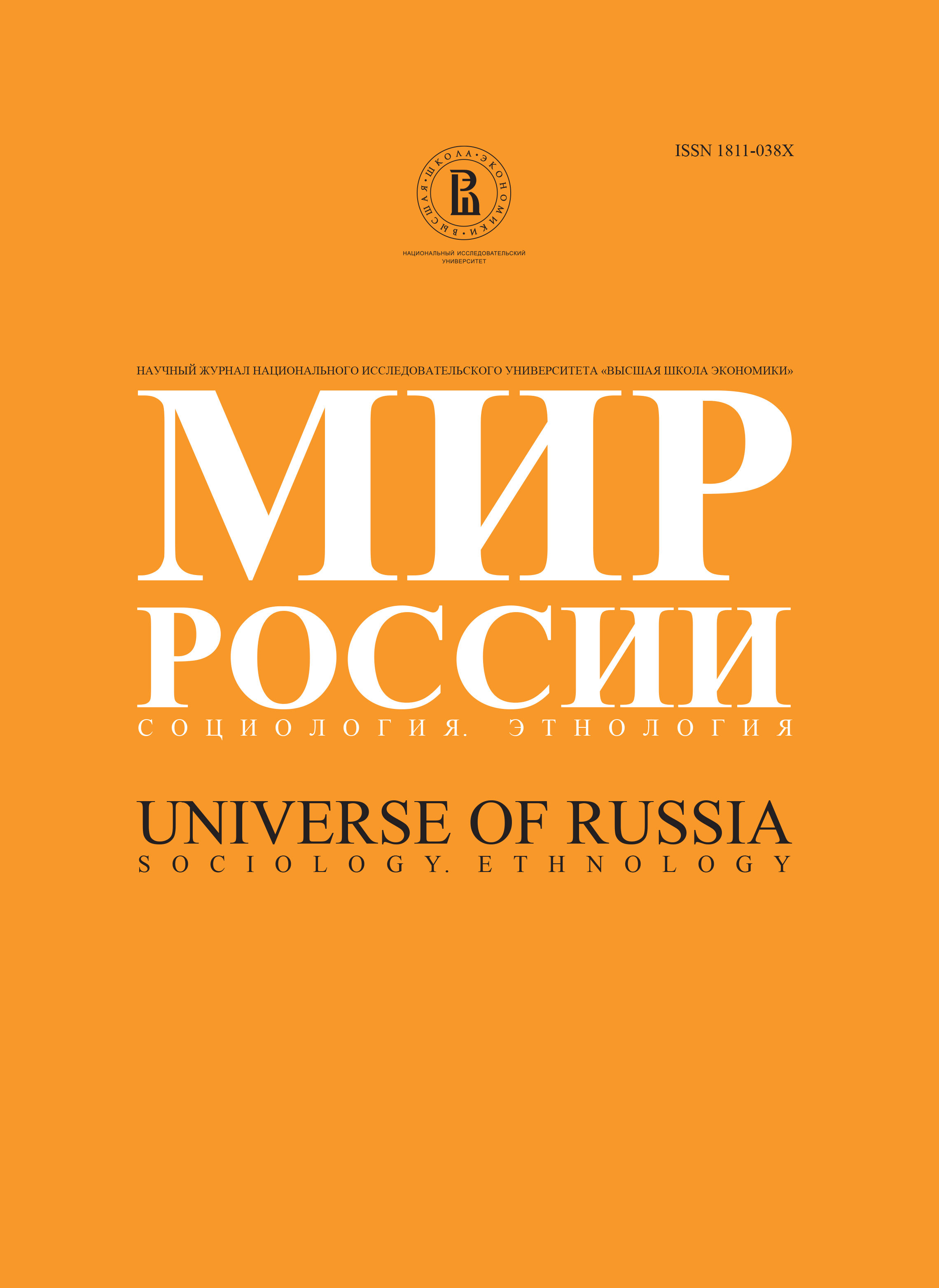Reproduction of Socio-Occupational Groups in Contemporary Russia
Abstract
Research in socio-occupational stratification is not an unusual thing. It has been widely addressed in the recent decades by many Russian, as well as Western researchers. Despite a number of on-going discussions in the field, occupational grouping of individuals and their description are a quite common problem, whereas the problem of reproduction of those groups is rarely being solved. What is reproduction of socio-occupational groups? First, if one is to study the process of reproduction in a society, it has to be a relatively stable organism, i.e. preserving and reproducing its core properties. In other words, we cannot study reproduction in societies, which undergo system transformation, when the whole social organics is subject to a major change. This, of course, has nothing to deal with the occasional change that occurs in many separate elements of the stable social organism, such as the transformation of relations between people, groups and their situations. Some groups may even disappear or ‘die out’, while the new ones will appear to fill their positions. The very notion of reproduction suggests that an object is being constantly reproduced as in some life cycle, and at the same time it is developing through its connections and exchange with outer environment. As this environment can be relatively stable or undergo a radical change, the reproduction itself can respectively be invariant or transform the object from cycle to cycle changing many of its essential properties. With regard to socio-occupational groups one can say that the reproduction of the latter includes the persistence of existing groups and their inter-relations, as well as the emergence of new groups and the forming of new relations. From this point of view we have addressed the period of a rather complicated transformation of Russia’s society since the beginning of 1990s until the end of 2006. The theoretical analysis has shown that the core system properties of that society have more or less crystallized and become the major factor in relations, behavior patterns and institutions. As for the society which has been described by our representative survey material of 2006, it is clear that there completely formed a distinct neo-etacratic order. This article attempts to explore and explain the movements in the socio-occupation structure of employed Russian population as described by consequent representative surveys of 1994, 2002 and 2006. Along with statistical description and the analysis of contingency tables an exotic approach to the study of inter-relation dynamics is being proposed based on the multidimensional scaling procedure. We have attempted to map socio-occupational groups using matrices, which provide information on the intensity of their interaction with each other. The general conclusion of this paper suggests that socio-occupational structure in contemporary Russia has undergone minor change, which was a quite expected result with regard to minor changes in the structure of the country’s economy. Although a quite curious trend has been discovered according to which the ‘neighboring’ groups such as consisting of working class occupations, or intermediate groups (lower-grade technical and supervisory occupations) become blurred, suggesting that their individual mobility patterns are very much alike. Occupational groups become less crystallized and this is just another support to our earlier suggestion that occupations in Russia are not embedded in its institutional structure and thus cannot be used as a basic criterion for constructing homogenous classes, which explains the existing inequality.E-mail: gordey.yastrebov@gmail.com
Key words: social status, profession, sociological surveys, scaling






